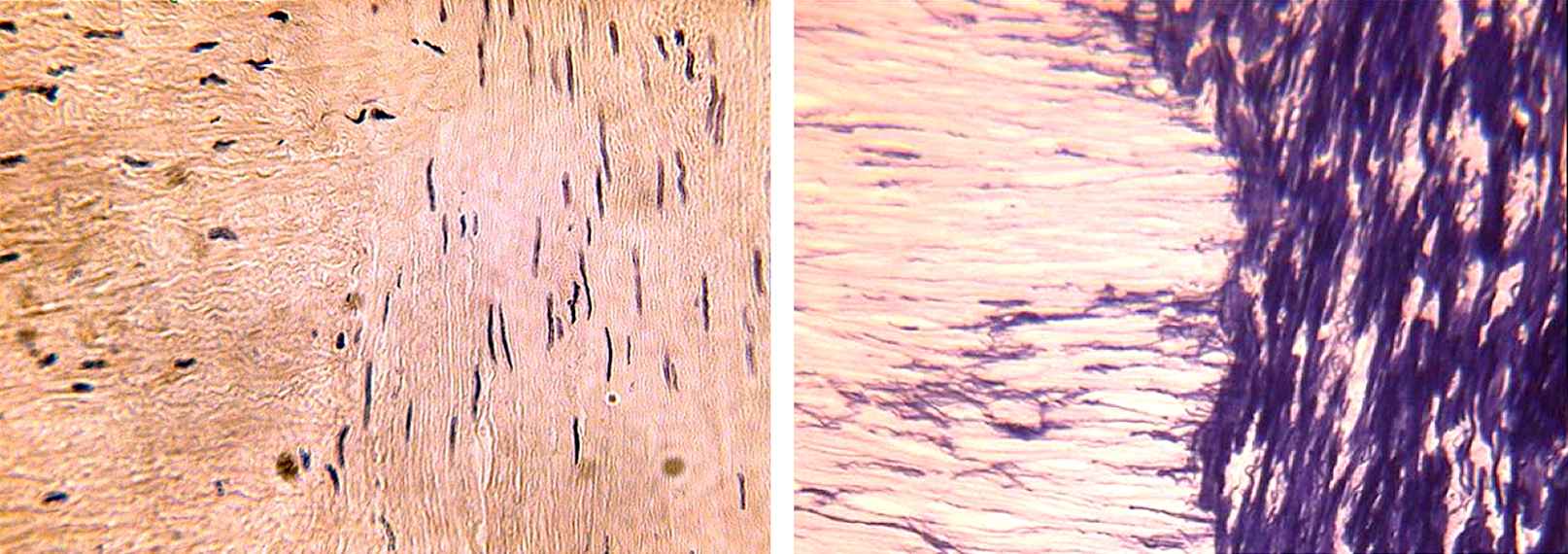3.4 CHARACTERISATION OF THE TWO-LAYERED MEDIA IN THE MAMMALIAN CAROTID ARTERY
- DOI
- 10.1016/j.artres.2012.09.022How to use a DOI?
- Open Access
- This is an open access article distributed under the CC BY-NC license.
Background: We have recently observed that in some animals the media of the carotid artery consists of two distinct layers. The inner 2/3 has a circumferential orientation of components whereas the outer 1/3 has an axial orientation. The aims of this study were to characterise the differences between the two layers.
Materials and Methods: We studied carotid arteries from the mammalian orders: artiodactyla, carnivora, cetacea, erinaceomorpha, lagomorpha, perissodactyla, pilosa, primates, rodentia and soricomorpha. Transmission electron microscopy confirmed the morphology and thickness of the layers. Histological staining was performed to characterise the cells and their phenotypes.
Results: We observed the two-layered media in the artiodactyla, perissodactyla and cetacea but not in any of the other orders. Immunohistochemistry showed that the distribution of fibrillin 1, NAV 1.8, tenascin C, fibronectin and collagen I & III were the same in the two layers. Alpha actin, desmin and collagen IV were seen only in the inner layer, suggesting a contractile phenotype for the cells therein, giving no indication of the function of the cells in the outer layer.
Conclusions: The inner media had a circumferential orientation of components and contractile smooth muscle cells; whereas the components of the outer layer were orientated axially with fibroblast-like cells of unknown function and more densely distributed scleroprotein. All the animals having the two-layered media are located downstream from a particular point on the mammalian supertree, corresponding to the superorder cetartiodactyla, suggesting that this structure evolved rapidly, approximately 80 million years ago for as yet unknown reasons.

Cite this article
TY - JOUR AU - C. Evagora AU - C. Hillery AU - L.H. Timmins AU - E. Das AU - S. Badye AU - J.E. Moore AU - J.E. Martin AU - S.E. Greenwald PY - 2012 DA - 2012/11/17 TI - 3.4 CHARACTERISATION OF THE TWO-LAYERED MEDIA IN THE MAMMALIAN CAROTID ARTERY JO - Artery Research SP - 146 EP - 146 VL - 6 IS - 4 SN - 1876-4401 UR - https://doi.org/10.1016/j.artres.2012.09.022 DO - 10.1016/j.artres.2012.09.022 ID - Evagora2012 ER -
